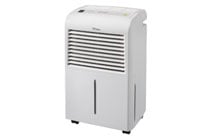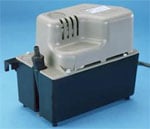Quicklinks:
- What humidity level (RH) should my dehumidifier be set to?
- My room air is measuring slightly less than my dehumidifier setting. Is something wrong?
- What if there is an odd smell coming from my Danby dehumidifier?
- What is relative humidity?
- hy isn’t water draining into the bucket?
- My Danby unit will not operate. What should I do?
- My Danby’s water removal capacity seems to be low?
- My dehumidifier is not collecting water?
- Should the unit shut off when the house reaches my set Relative Humidity?
- What is porting?
- Do I need a condensate pump?
- When my Danby is running, the exhaust air is quite warm…is this normal?
- What do I do when my dehumidifier stops working?
- Should I keep my dehumidifier box?
- How do I maintain my dehumidifier?
- I am trying to direct drain my Danby, but the water keeps going into the bucket?
- Why does the fan in my Danby dehumidifier run all the time?
- Can I safely recycle the water my dehumidifier produces?
- What does the P1 indicator on my Danby mean?
- What are other ways that I can reduce moisture in my home?
What humidity level (RH) should my dehumidifier be set to?
Depending on your personal preference and to ensure your dehumidifier will help to fight against mold and dust mites in your home, the relative humidity level is best between 40-50%.
My room air is measuring slightly less than my dehumidifier setting. Is something wrong?
 The margin of error of the humidity sensor can be +/- 5% RH. Although it should stop at the level you have set it at, it can be a few degrees above or below your manual setting before the compressor turns on or off automatically.
The margin of error of the humidity sensor can be +/- 5% RH. Although it should stop at the level you have set it at, it can be a few degrees above or below your manual setting before the compressor turns on or off automatically.
What if there is an odd smell coming from my Danby dehumidifier?
A dehumidifier by itself will not produce any form of smell. Usually any smell that emits from the unit will be something that is recycled from the room itself.
Relative humidity is a percentage that shows how much water vapor is currently trapped in the air relative to the maximum amount of water vapor the air can hold at a given temperature. Imagine that you have a glass of water and you begin to stir sugar into the water. When you get to point where you have put a full cup of sugar in the glass, you will notice that the sugar no longer dissolves and that it begins accumulating at the bottom of the glass. At this point, the water is saturated with sugar and cannot hold any more. At the point where you have only put 1/2 a cup of sugar in the water, you are at 50% of the maximum amount that the water can hold at the current temperature. Now, think of the air in your home as that glass of water and the moisture vapor in the air as the sugar. Your relative humidity level is the ratio of the current amount of water vapor in the air relative to the maximum amount of water vapor it will hold at a given temperature.
Why isn’t water draining into the bucket?
 There may be an obstruction in the drain pan above the bucket, check to make sure no obstruction has occurred.
There may be an obstruction in the drain pan above the bucket, check to make sure no obstruction has occurred.
My Danby unit will not operate. What should I do?
First, check the power cord connection. Next, check the electrical outlet to make sure there was not a blown fuse. Next, check if the water tank is full and empty it if needed. Finally, check to see if the water tank is installed properly.
My Danby’s water removal capacity seems to be low?
Check to see if the air filter is dirty and/or blocked. The room temperature might be too low, (below 15.5° C/ 60° F). Check to make sure that there is no obstruction to the unit that might be causing poor air flow circulation.
My dehumidifier is not collecting water?
If the room air has a lower relative humidity than the set point, then there will not be any water in the bucket because there is not enough humidity in the air that needs to be condensed and extracted. During drier, winter months there is likely not enough humidity in the air to have water collect in the bucket. Danby dehumidifiers will generally only extract humidity out of warm air since the condensation process occurs only by lowering the air temperature with refrigerant. If you are running a dehumidifier in your basement in the winter, the room may be damp but too cold for the dehumidifier to pull out the humidity. Try running the unit in the bathroom after having a hot shower without the bathroom fan on. If your dehumidifier is operating correctly, then the unit should draw in water.
Should the unit shut off when the house reaches my set Relative Humidity?
All of Danby’s dehumidifiers are programmed so that the compressor will cycle (i.e. shut off) when the set air relative humidity percentage is reached. However, the fan will run continuously.
 Porting is the process of using an exterior drain line to continuously drain your dehumidifier. As mentioned above, most of the dehumidifiers we offer come with a port where you can attach a plastic or rubber hose to the unit to drain the collected water from the dehumidifier. A suitable type and length of hose can be purchased from your local hardware store. Porting is a fairly simple process and works best when gravity is on your side. The dehumidifier needs to be placed in a higher position than the receptacle where you want the water to drain into. If this is not possible due to a grade or a lack of a nearby drain, you can still port your dehumidifier, but you will need to use a condensate pump to push the water a longer distance away from the unit.
Porting is the process of using an exterior drain line to continuously drain your dehumidifier. As mentioned above, most of the dehumidifiers we offer come with a port where you can attach a plastic or rubber hose to the unit to drain the collected water from the dehumidifier. A suitable type and length of hose can be purchased from your local hardware store. Porting is a fairly simple process and works best when gravity is on your side. The dehumidifier needs to be placed in a higher position than the receptacle where you want the water to drain into. If this is not possible due to a grade or a lack of a nearby drain, you can still port your dehumidifier, but you will need to use a condensate pump to push the water a longer distance away from the unit.
 A condensate pump is a simple pump device that pushes fluids much in the same way a sump pump works. The only difference is a condensate pump is built mainly for the purpose of moving moisture removed by dehumidification. This small pump attaches to the dehumidifier the same as if you were simply porting it. The hose runs from the dehumidifier to the condensate pump and then a separate line runs from the pump to your drain. A condensate pump allows for continuous drainage of your dehumidifier and eliminates the hassle of having to empty a heavy water bucket. This is a simple and inexpensive solution to use when there are no drain lines readily available for your dehumidifier, or when gravity is working against you. The condensate pump pictured is for use with home dehumidifiers.
A condensate pump is a simple pump device that pushes fluids much in the same way a sump pump works. The only difference is a condensate pump is built mainly for the purpose of moving moisture removed by dehumidification. This small pump attaches to the dehumidifier the same as if you were simply porting it. The hose runs from the dehumidifier to the condensate pump and then a separate line runs from the pump to your drain. A condensate pump allows for continuous drainage of your dehumidifier and eliminates the hassle of having to empty a heavy water bucket. This is a simple and inexpensive solution to use when there are no drain lines readily available for your dehumidifier, or when gravity is working against you. The condensate pump pictured is for use with home dehumidifiers.
When my Danby is running, the exhaust air is quite warm…is this normal?
The warm air that your dehumidifier is expelling is normal. When the unit is dehumidifying, the compressor is working which causes the compressor to become quite hot. In order to avoid having the compressor overheat, air is drawn by the compressor at a rapid rate and the heat is then transferred to the air which must be expelled from the unit. The warm air will stop shortly after the unit has reached the desired humidity. This warm air should not change your room temperature by more than a couple degrees unless the space is very small.
What do I do when my dehumidifier stops working?
Your first step would be to reference the user manual to check for any simple Danby dehumidifier troubleshooting measures. While a dehumidifier is a simple appliance, it does have several things that could go wrong with it. From sensors and a humidistat to heating and cooling coils, there are several aspects of a dehumidifier that could malfunction. Some dehumidifiers have filters that need to be changed. Other times, a certain feature will stop working, such as a faulty humidistat that causes the dehumidifier to run constantly. In most instances, you will want to locate your closest servicing dealer for help and maintenance. You can contact the manufacturer and they can point you in the right direction depending on your issue. If the dehumidifier is under warranty, the repairs will likely cost very little if anything at all. If your unit is beyond its warranty period, you may find it less expensive to purchase a new dehumidifier rather than repair your current one. If this is the case, contact the manufacturer or a local organization about recycling options. As with all of our products, should you have a problem with a Danby dehumidifier that you purchased from us at AchooAllergy.com, contact customer service, toll-free, at 1-800-339-7123 for an exchange of a defective or malfunctioning dehumidifier.
 Should a dehumidifier you purchase from us encounter problems due to no fault of your own within 60 days of purchase, you can contact customer service to obtain a Return Authorization number and exchange the unit. For this reason, we recommend you keep the box your dehumidifier arrived in for at least 60 days. If you have the storage space available, you may want to keep the box for as long as the manufacturer’s warranty time period.
Should a dehumidifier you purchase from us encounter problems due to no fault of your own within 60 days of purchase, you can contact customer service to obtain a Return Authorization number and exchange the unit. For this reason, we recommend you keep the box your dehumidifier arrived in for at least 60 days. If you have the storage space available, you may want to keep the box for as long as the manufacturer’s warranty time period.
How do I maintain my dehumidifier?
There is very little regular maintenance required for dehumidifiers. For most models, you simply unpack them and plug them in. The primary maintenance with these units is disposing of the water collected in the drip tanks. Most come with convenient built in handles, so after you slide the bucket out of the unit you can easily carry it outside or to your drain to dump the water out.
A more convenient option is to port your dehumidifier. Nearly all of these units come with a small port toward the bottom on the unit. From this port you run a small hose to an existing drain. Some people find it best to tie this drain line into your existing HVAC drain line (for moisture produced by your air conditioner) or possibly to a basement drain. From time to time you may want to check the tank and make sure it is clean and check the drain line (if ported) for blockage. If the unit has a removable cover you should check and clean the condensing coils annually.
I am trying to direct drain my Danby, but the water keeps going into the bucket?
Make sure that you are using a hose that is no longer than five feet in length. In addition, you should make sure that the hose is draining down into a drain in the floor. Please note: The direct drain feature relies on gravity to move the water through the hose. The only other direct drain option is through the use of a condensate pump.
Why does the fan in my Danby dehumidifier run all the time?
For past versions of the Danby Premiere, the fan would run all the time to keep air circulating in your space. But the new Danby Energy Star dehumidifiers feature a fan that will actually shut off a few minutes after the compressor stops. This does a couple things. First, it cuts down on the noise your dehumidifier makes since the fan is not constantly operating. Second, it should help to reduce the buildup of heat in the room. Since it often takes a little while for the motor to cool, as the fan operates, it blows dried air over the motor which picks up heat and exhausts it out into the room. Since the fan no longer operates all the time, it should also help with heat. Lastly, it may cut down on your power consumption. This is going to be a very minimal change though since the fan itself uses very little power, and these dehumidifiers, as Energy Star compliant appliances, use little energy to begin with.
Can I safely recycle the water my dehumidifier produces?
 This is a “yes, but” answer. If you are not porting water away from your dehumidifier, there are many things you can do with the condensate that your Danby dehumidifier produces. Keep in mind that the water produced by air conditioners and dehumidifiers is not meant for human consumption. While it will often initially be free of pathogens, it can stagnate quickly. If the tank is not kept clean, the water could become contaminated if fungi or other organisms begin to grow in your tank. What also makes it unfit for human consumption is that dehumidifier water often lacks the mineral and inorganic substances that make water potable. This also means you should not use the water to fill your pet’s water dish.
This is a “yes, but” answer. If you are not porting water away from your dehumidifier, there are many things you can do with the condensate that your Danby dehumidifier produces. Keep in mind that the water produced by air conditioners and dehumidifiers is not meant for human consumption. While it will often initially be free of pathogens, it can stagnate quickly. If the tank is not kept clean, the water could become contaminated if fungi or other organisms begin to grow in your tank. What also makes it unfit for human consumption is that dehumidifier water often lacks the mineral and inorganic substances that make water potable. This also means you should not use the water to fill your pet’s water dish.
The best use of the water is for watering your plants or gardens. For those who want to conserve water or in places where water may be at a premium, you can use your dehumidifier water to water your indoor plants or use it outside for a vegetable garden, flowers, or other landscaping you may have. While you cannot drink the water, it still can be put to good use.
Depending on the environment this same advice will hold true for our commercial / industrial dehumidifiers. The exception would be while using a dehumidifier in an environment where there is toxic and harmful chemicals in the air. In these instances the condensate produced may contain these substances and should be handled accordingly.
What does the P1 indicator on my Danby mean?
P1 is part of a normal function of your dehumidifier. When your compressor is working, frost can form on the cold evaporator coils. When there is enough frost on the coils, the unit will go into a P1 de-icing program. This de-icing cycle will last anywhere from 15-45 minutes. Once complete, the dehumidifier wil automatically resume normal function. The cooler the room, the more often this function will turn on.
What are other ways I can reduce moisture in my home?
There are several other things you can do, in conjunction with the use of a Danby dehumidifier, to help reduce the level of humidity in your home. First, make sure there are no leaks or seepage in and around your home. Improper landscaping, leaking pipes, faulty gutters and clogged drains can all increase the amount of water and moisture in and around your home. Next, use your dryer. Some of us like to allow certain articles of clothing to air dry for fear of shrinkage in the dryer. By allowing laundry to air dry in your home, you are increasing the overall humidity level.
Always remember to use exhaust fans whenever possible. While using the dryer helps, you should inspect the vent to make sure it is actually vented to the exterior of your home and inspect the hose for cracks or leaks. In the bathroom and kitchen, your exhaust fans can quickly remove excess moisture out of your home. Also, by keeping the doors open in your home, you can allow air to circulate easily from room to room. By allowing heat to circulate, you can bring warm air to colder places where moisture is likely to condense. Lastly, it always helps to air out your home from time to time.
Am I forgetting anything?
If you have any questions about dehumidification, https://www.achooallergy.com/dehumidifiers/brands/danby/Danby dehumidifiers, humidity and allergies, prices, or our policies, please call our customer services representatives at 1-800-339-7123 or you can reach us via email at [email protected].
View our selection of Danby Dehumidifiers, or return to the Dehumidifiers homepage.
